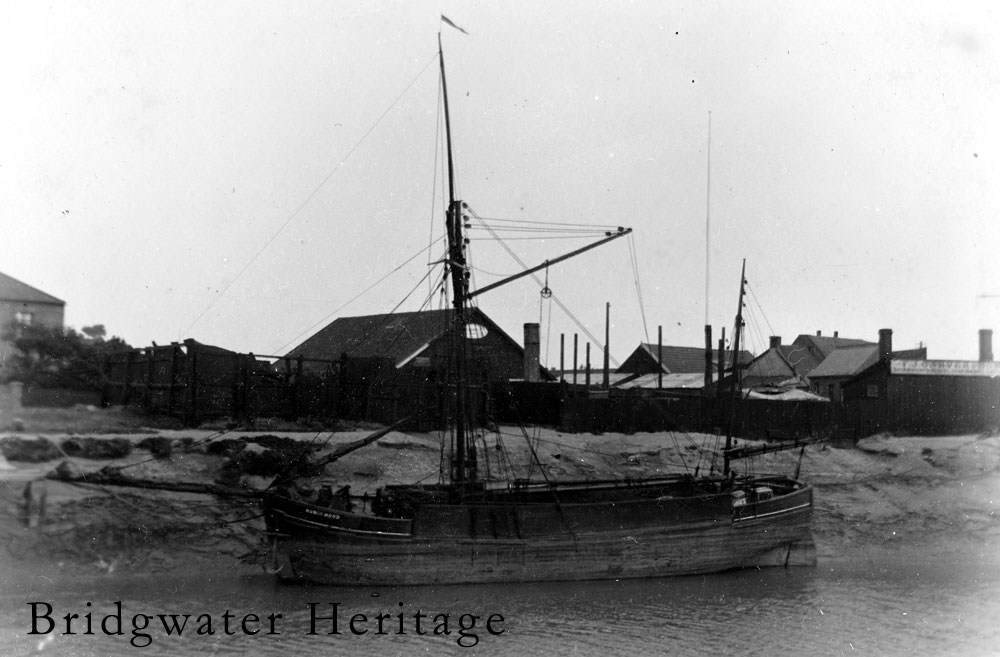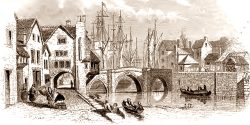
The Robin Hood was a trow, built at Bristol in 1852. Her official registration number was 3871 and she had a registered tonnage of around 39 tons. Being a small vessel, she had no hatches, so all her cargo was stored in an open hold. The sides were canvas, which can be seen here (Fitzhugh)
On 14 August 1877 she was driven ashore and sunk at Kymin, during a voyage between Bridgwater and Cardiff. The Shipping and Mercantile Gazette of 17 August 1877 reported:
Report of Joseph Windows, Master of the trow Robin Hood, of Bristol, 38 tons, rom Bridgwater, August 8, for Cardiff (cargo of burnt ore):- Proceeded in tow of the steamtug Victor, and towed to Burnham, where she left me, and as the wind had increased to a strong breeze, I brought to anchor about a quarter of a mile above the Gore White Buoy. The sea increased with the strong ebb tide, causing my vessel to ride heavily, and about 7.30 AM same morning (8th) my cable parted. I then made sail for Cardiff, and, having a good tide across with a fair wind, I arrived at Kymin Beach at about noon. Same day, at from 1 to 2 PM, the tide at flood, weather overcast and squally, wind South West, blowing 6, with a heavy chopping sea from the South West, said vessel was lying at anchor with working anchor out at 20 fathoms of cable, and through the heavy and increasing wind, accompanied with a strong flood tide, my vessel began to drag. Veered away my cable to the clynch, but, finding she was still dragging, I hoisted my mainsail to try and sheer her off to the south and east and run for Newport river if possible; but the wind and tide were to strong for her, and after dragging for nearly a mile, her heel caught on the wrach and she lay broadside to the sea, which began to wash over her, carrying away her side, and in a very short time she filled and foundered. She is high and dry at low water. I shall have to discharge part cargo, to enable me to raise her. Cardiff August 9th.
Windows was apparently successful in his recovery effort.
On 1 November 1909 she was sunk.The Western Daily Press of 7 December 1909 reported:
Intelligence has been received at Bridgwater of the loss of the trow Robin Hood, belonging to the port. The Robin Hood was on a voyage from Lydney to Bridgwater with a cargo of coal, and during the severe gale was seeking shelter, when it ran ashore and sank at the east point of the River Esk. The captain (Mr George Sharman) and the crew took the ship’s boat, and were with difficulty rescused by the SS. Bulldog, also of the port of Bridgwater.
According to the 1910 Mercantile Navy List, 1910, page 867, she was owned by John L. Hurman of Bridgwater. Presumably the ship’s loss had not reached the publishers in time.

Sources
Rod Fitzhugh, Bridgwater and the River Parrett in old Photographs (1993), p.109
